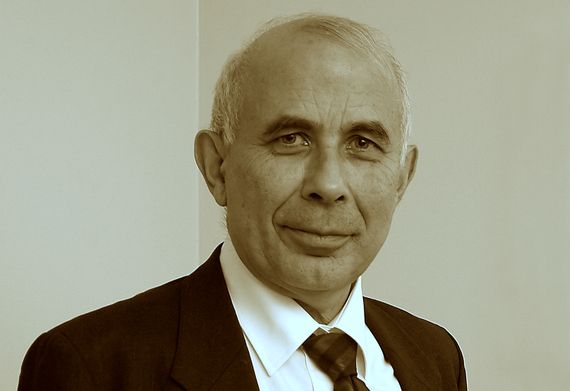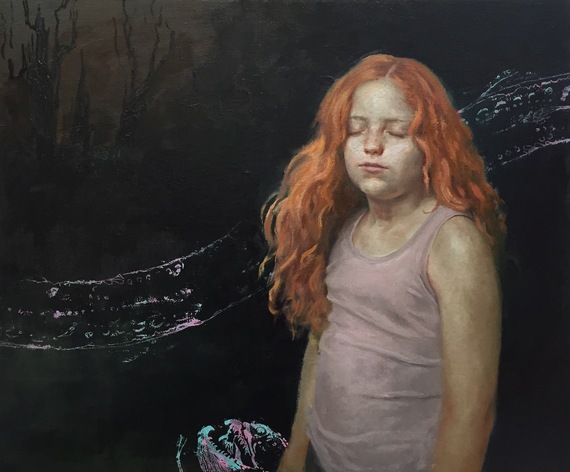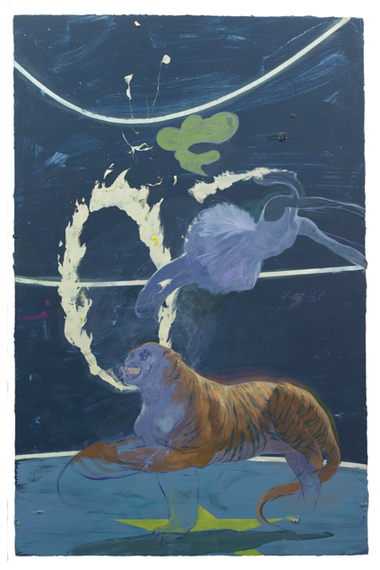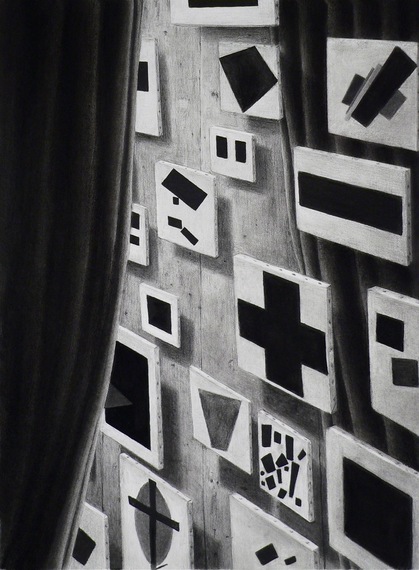In Part One of this interview with the founder of neuroesthetics, Semir Zeki, he spoke about beauty from a neurological perspective. Here he defends his field after some recent academic and media criticisms.
FSH: A couple of painter friends have been turned off neuroesthetics after reading a critique by John Hyman. He said, "Neuroscience can explain some features of some paintings. For example, some of the color effects of impressionist paintings are explained by lateral inhibition. But the idea that there is a neurological theory of art in prospect is utterly implausible, in my view. The eye catching paradoxes Ramachandran and Zeki propose--that all art is caricature, that artists are neurologists--are in fact very weak ideas." Has John Hyman mischaracterized your intentions in his article, and what is your response to his critique?
SZ: I am sure that there are many who are suspicious of neuroesthetics, and this is good and healthy for the subject. I think, however, that there have been some criticisms made that are just much too weak to worry about. One of these is that we do not understand the difference between art and beauty, which of course suggests that we are a great deal more ignorant than we actually are. I do not know of any neurobiologist in this area who does not understand the distinction.
One statement of mine that appears to have irritated some art historians - and I am sorry for that - is that there can never be a complete theory of aesthetics unless one also takes into account the brain mechanisms that are engaged during aesthetic experiences. Please note that this statement is quite careful. It says that there cannot be a COMPLETE theory of aesthetics without taking into account the brain mechanisms that correlate with such experiences; it does not say that there cannot be aesthetic theories that ignore the brain. That can happen, and has indeed happened throughout the ages and continues to happen. But I believe that there are many weighty philosophers of aesthetics who would agree with that statement. For example, Edmund Burke defined beauty as "...a quality in bodies which acts upon the human mind through the intervention of the senses". If one accepts that brain activity is responsible to a significant extent for the mind and if one accepts that "senses" refers exclusively to the brain and the sensor organs which connect with it, then one ends up with a definition two thirds of which is related to the brain.
I would myself not say that a neurobiological theory of art is "utterly implausible". There may or there may not be such a neurobiologically based theory of aesthetics. The critical issue is that that is not the question that neuroesthetics addresses. Neuroesthetics merely asks what the neural mechanisms that are engaged in aesthetic appreciation, judgment and productivity are. These are very legitimate scientific questions which, to me at least, are unexceptionable.
Nor does neuroesthetics address the question of what beauty is but only the question of what brain mechanisms are engaged during the experience of beauty (or ugliness). Studying brain activity that correlates with the experience of beauty simply adds to our knowledge. Scientifically, it is not very different from asking "what are the neural mechanisms that correlate with the experience of colour". From what we have learned about the latter in the past forty years, I think we can say with much confidence that there can be no complete theory of colour which does not take account the brain activity that is engaged when we see colours. I do not think that any biologist would disagree with that statement, and I have not encountered any philosopher or artist who disagrees with it either
Studying the brain mechanisms involved in aesthetic experience is but one way of addressing the problem of aesthetics, but it is not the only way and no one has ever said so, at least no neurobiologist that I know of. There are many, many who have addressed the question of beauty without resolving the question satisfactorily. But if so many have addressed the question over so long a period of time, it implies on the one hand that there must be something explicable and on the other that they have not found satisfactory answers that encompass all aspects of aesthetics. Why would anyone wish to deny neurobiologists from addressing the same question and bringing new insights into it. Why deny neurobiologists a privilege that is extended to others. There is no reason at all to suppose that what we have uncovered is not of interest, at least in terms of how the brain functions. That it may not be of interest to (some) art historians or philosophers of aesthetics is another matter.
I am aware of the fact that some art historians are very dismissive of our efforts (It is worth noting here that artists, as opposed to (some) art historians, are usually much more hospitable to our ideas and interested in our results). Some philosophers have described neuroesthetics as "neuro-trash" and "neuro- rubbish". I cannot return the compliments, for I find much of what philosophers of aesthetics and historians of art say very interesting and illuminating, and of importance in framing questions in neuroesthetics, regardless of whether they think of our efforts as trash or not. No one, for example, has condensed better the critical question for neuroesthetics than the art critic Clive Bell. In general, I try to read what art historians and philosophers of aesthetics have written very carefully, take from it what is good and ignore the rest. In general, too, I find that there is more good stuff in what they have to say than bad.
This brings me to the question of " the artist as neurobiologist". Whatever criticism this has attracted, I think it would be true to say that very often artists have asked the same question as neurobiologists and tried to provide answers with their own methods. For example, Mondrian asked, "what are the essential constituents of all forms" and he settled on the vertical and horizontal straight lines. Physiologists have asked the very same question and, through physiological methods, have also settled on the straight line as the "building block" of forms. The early, analytic, phase of Cubism was an artistic experiment in exploring how a form maintains its identity when viewed in different conditions and from different angles and distances. This is the identical question - that relating to form constancy - which neurobiologists ask, but use different techniques to address the question. There is a great deal to be learned about the visual motion system of the brain from the products of kinetic artists, and they reached conclusions about visual motion which are very similar to the ones that neurobiologists reached much later. These examples can be multiplied, and it focuses attention on the common problems that we, and they, try to address - problems of perception in the broadest sense. When one concentrates on grand problems rather than disciplines, one begins to realise that there is often a common pursuit, which is not the same thing as saying that artists consciously assume the role of neurobiologists or think of themselves as neurobiologists.
FSH: In a Forbes Magazine article entitled "Have We Been Brainwashed by Neuroscience?" the author has this paragraph: "If you were a Martian who came to Earth and saw someone's legs move, you couldn't say that means X or Y. The legs could be moving because we're walking, running, kicking, bored or were just bitten by a bee. It could mean a thousand different things. The same is true in the brain, but the complexity is much greater. "It's a mistake to say that because this brain area became activated, it must mean the person is experiencing psychological state X," Lilienfeld says. "It's rarely, if ever, possible to do that and sophisticated imagers know that."
How confident are you that current research methods give an accurate reading of the meaning of a brain's activity?
SZ: I will address your question about whether we have been brainwashed by neuroscience. If we have, it is not because of neurobiologists who, on the whole, tend to be very circumspect and reticent in their conclusions. I do not believe that any neurobiologist considers or believes that an area of the brain acts in isolation to mediate any experience. I think that the most they would say is that an area is important for such an experience and that without it, the experience may be diminished or even absent - as in the examples of prosopagnosia (inability to recognize familiar faces), achromatopsia (inability to recognize colours) or akinetopsia (inability to recognize visual motion). But no neurobiologist believes that these areas would be capable of mediating such experiences if disconnected from the rest of the brain - at least I have never come across any neurobiologist who has said so. Hence it serves little purpose to attack neurobiologists for what they have not said.
Some, and indeed perhaps many, have criticised the notion that the mind is not the brain, since they believe that the mind encompasses much more than the brain. I have no strong views on this. But I think that most - even the harshest exponents of this view - would concede that at least 25 percent of the mind is the result of brain activity. I would be happy to settle for even less - say 10 percent - and simply say that this is the ten percent that I am studying, leaving the remaining 90 percent for others to explore.
Semir Zeki is the headline speaker at TRAC2015, a representational art conference that takes place November 1-4 in Ventura, California.






